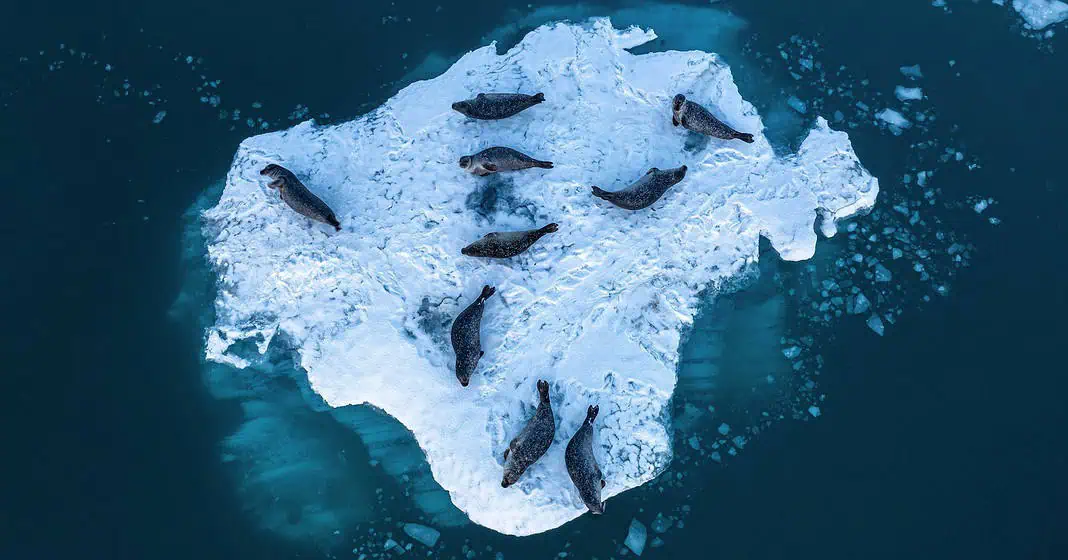Harbor seals in icy regions use icebergs shed by glaciers as safe platforms to give birth, care for young and molt. New research finds that as glaciers change with the climate, the resulting changes in size, speed and number of icebergs affect seals’ critical frozen habitat.
Mother seals prefer stable, slower-moving bergs for giving birth and caring for newborn pups, while in the molting season, they and the rest of the seal population favor speedier ice near the best foraging grounds.
According to Lynn Kaluzienski, a postdoctoral fellow at the University of Alaska Southeast who led the study:
“Our work provides a direct link between a glacier’s advance and seals’ distribution and behavior. Interdisciplinary studies like this one coupled with long-term monitoring campaigns will be important to understand how climate change will influence tidewater glacier fjord ecosystems in the future.”
Kaluzienski presented the findings at AGU’s 2024 Annual Meeting in Washington, DC this week.
The study focused on harbor seals and icebergs in Johns Hopkins Inlet and Glacier, located in Glacier Bay National Park, Alaska. Johns Hopkins is one of the few glaciers on Earth that is advancing (growing thicker and flowing forward into the fjord) rather than retreating due to global warming, partly thanks to its terminal moraine, comprising crushed rock and other sediment, which effectively barricades the front of the glacier from warmer ocean water that would increase the glacier’s melt rate.
But that wall of sediment reduces the number of icebergs the glacier sheds into the fjord. Fewer icebergs means less habitat for seals, making it crucial that researchers understand how seals use the icebergs available to them.
Kaluzienski, university colleagues, and collaborators from the US National Park Service spent the last few years documenting fine-scale variations in icebergs and in the distribution of seals in the fjord, using time-lapse cameras and aerial photographic surveys.
She said:
“Icebergs are found throughout the fjord in regions of fast flow, within eddies, and close to the glacier. We wanted to understand which of these areas seals were using and how this habitat is changing in response to advances at the glacier front and reduction in iceberg numbers.”

